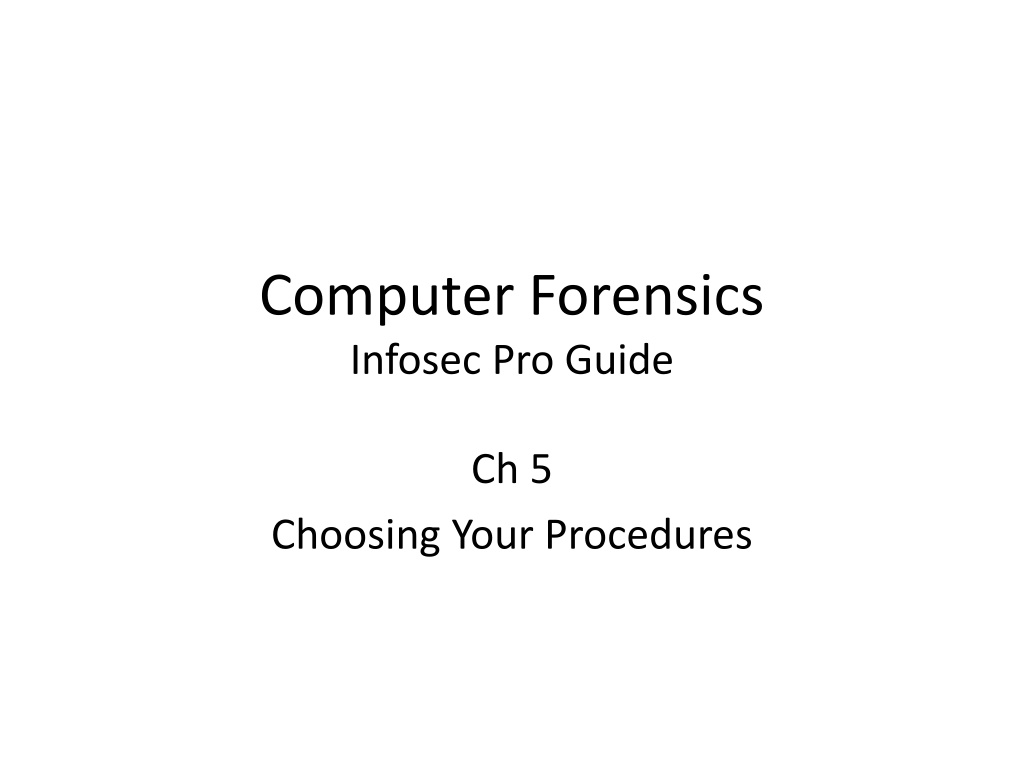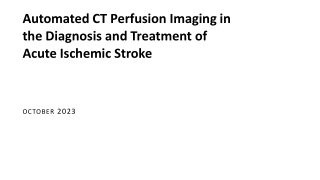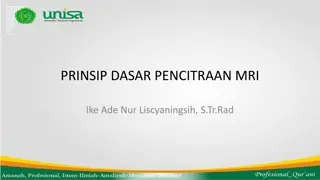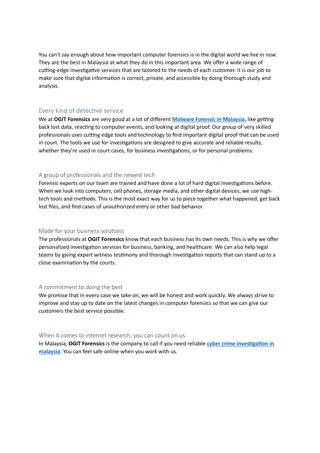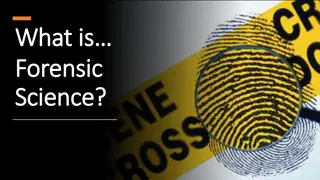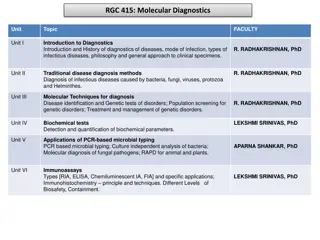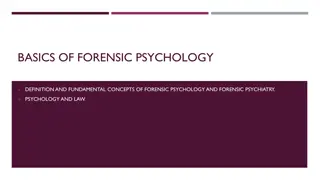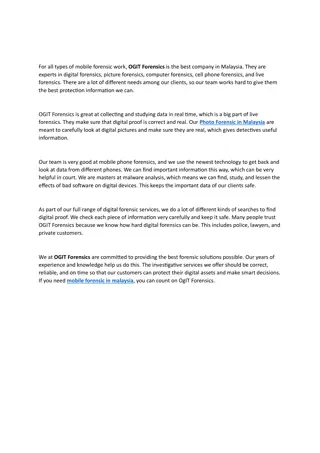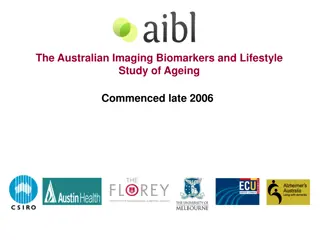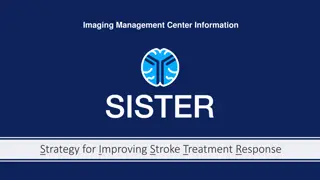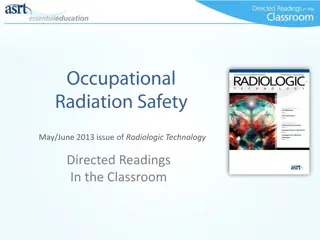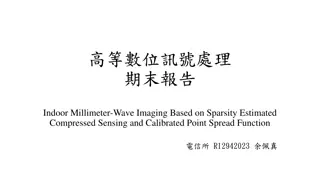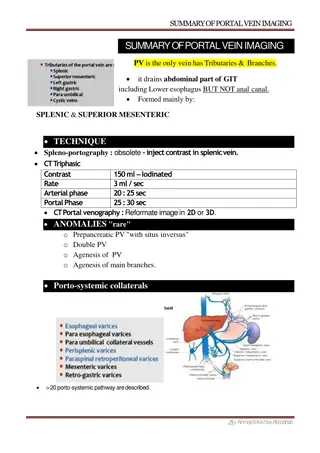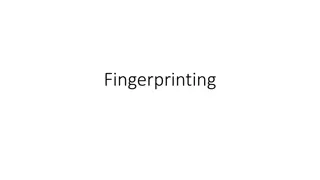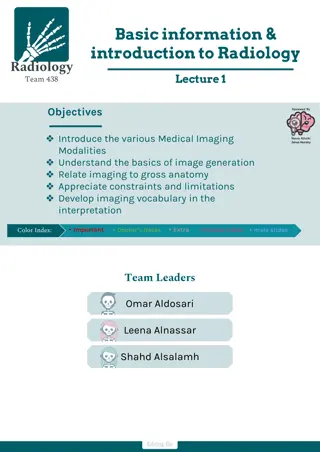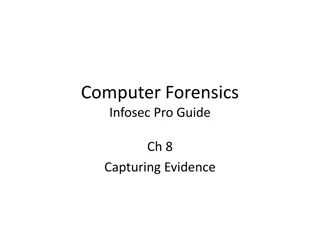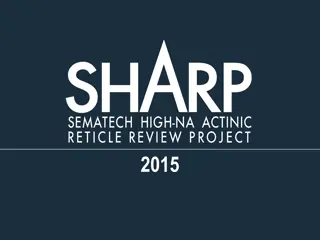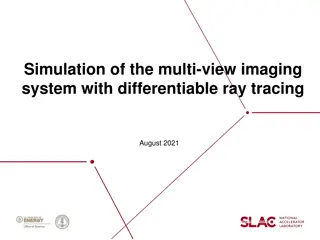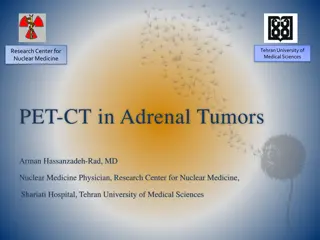Choosing Forensic Imaging Methods
This guide delves into the process of choosing forensic imaging methods, covering topics such as standard forms, lab manuals, hardware write-blockers, software write-blockers, and more. It also provides insights into determining comfort levels with various methods, making informed decisions based on factors like familiarity with Linux command line, budget constraints, and risk tolerance. Additionally, pros and cons of hardware write-blocking are discussed to help readers understand their options in computer forensics.
Uploaded on Mar 02, 2025 | 0 Views
Download Presentation

Please find below an Image/Link to download the presentation.
The content on the website is provided AS IS for your information and personal use only. It may not be sold, licensed, or shared on other websites without obtaining consent from the author.If you encounter any issues during the download, it is possible that the publisher has removed the file from their server.
You are allowed to download the files provided on this website for personal or commercial use, subject to the condition that they are used lawfully. All files are the property of their respective owners.
The content on the website is provided AS IS for your information and personal use only. It may not be sold, licensed, or shared on other websites without obtaining consent from the author.
E N D
Presentation Transcript
Computer Forensics Infosec Pro Guide Ch 5 Choosing Your Procedures
Topics Forensic imaging methods How to determine your comfort level with various methods Standard forms and a lab manual
Forensic Imaging Methods With hardware write-blocker With software write-blocker On dedicated devices Of live systems Using custom boot CD/DVDs These all make the same images, except for live acquisition
How to determine your comfort level with various methods
Questions Are you comfortable on Linux command line? If not, avoid Linux CD/DVD methods Can you afford a write-blocker? If not, you need to use software write-blocking A forensic CD/DVD works too Write-blockers are not perfect test them
Questions Do you have a large budget but a low tolerance for risk? Self-contained forensic imaging systems are available Cost $1500 - $4000 Very easy to use, low chance of mistakes
Questions Are you comfortable testing and explaining Windows registry changes? USB registry write-blocking works in Windows XP, 7, or 8 (but not Server 2008!) Are you comfortable with the Windows command line? You can use Windows FE, a bootable forensic CD/DVD (Link Ch 3c) Command-line environment
Hardware Write Blocking Pros and Cons Pros Reliable protection, documented and tested by vendor Any forensic imaging program, OS, or analysis tool can be used without the risk of modifying the evidence Some device-specific imaging programs allow faster imaging (e.g. Tableaux)
Hardware Write Blocking Pros and Cons Cons The number of devices you can image at one time is limited by the number of write blockers you have The type of devices you can forensically image are limited by the type of write blockers you have Hardware write blockers are moderately expensive
Software Write Blocking Pros and Cons Pros You can image many systems at once, by making more CD/DVDs You can image any type of media as long as there are drivers for it in the CD/DVD Free Cons Can be slower than hardware write blockers Without good prior testing and procedures, software write blockers can fail
Dedicated Unit Pros and Cons Pros Created specifically for forensic imaging Fastest method Cons Expensive Number of devices you can image is limited by the number of units you have Many types of media are not supported Issues may require a firmware update to fix
Creating standard forms and a lab manual
Essentials After creating an image, fill out a form that states: Where it came from How you forensically imaged it Validates that hashes match Indicates when the evidence is no longer in your custody
Chain of Custody Form From Scientific Working Group on Digital Evidence Link Ch 5b
Request Forms Who is requesting the information Who is being investigated The devices you are being authorized to access What you are being asked to investigate The date of the request This document will protect you from unhappy executives if a case gets political
Report Forms You need to fill out a report tempate Explain in human terms what you found Attach the output of a forensic tool as an appendix
Standard Operating Procedures Manual Link Ch 5c
